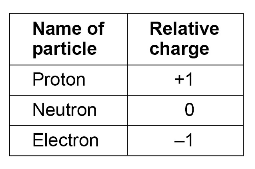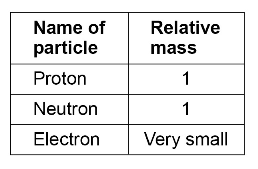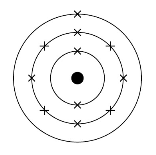#1.1.1
Atoms, elements and compounds
All substances are made of atoms. An atom is the smallest part of an element that can exist.
Atoms of each element are represented by a chemical symbol, eg O represents an atom of oxygen, Na represents an atom of sodium.
There are about 100 different elements. Elements are shown in the periodic table.
Compounds are formed from elements by chemical reactions. Chemical reactions always involve the formation of one or more new substances, and often involve a detectable energy change.Compounds contain two or more elements chemically combined in fixed proportions and can be represented by formulae using the symbols of the atoms from which they were formed. Compounds can only be separated into elements by chemical reactions.
Chemical reactions can be represented by word equations or equations using symbols and formulae.
Students will be supplied with a periodic table for the exam and should be able to:
- use the names and symbols of the first 20 elements in the periodic table, the elements in Groups 1 and 7, and other elements in this specification
- name compounds of these elements from given formulae or symbol equations
- write word equations for the reactions in this specification
- write formulae and balanced chemical equations for the reactions in this specification.
Write balanced half equations and ionic equations where appropriate.
#1.1.2
Mixtures
A mixture consists of two or more elements or compounds not chemically combined together. The chemical properties of each substance in the mixture are unchanged.
Mixtures can be separated by physical processes such as filtration, crystallisation, simple distillation, fractional distillation and chromatography. These physical processes do not involve chemical reactions and no new substances are made.
Students should be able to:
- describe, explain and give examples of the specified processes of separation
- suggest suitable separation and purification techniques for mixtures when given appropriate information.
#1.1.3
The development of the model of the atom (common with physics)
New experimental evidence may lead to a scientific model being changed or replaced.
Before the discovery of the electron, atoms were thought to be tiny spheres that could not be divided.
The discovery of the electron led to the plum pudding model of the atom. The plum pudding model suggested that the atom is a ball of positive charge with negative electrons embedded in it.
The results from the alpha particle scattering experiment led to the conclusion that the mass of an atom was concentrated at the centre (nucleus) and that the nucleus was charged. This nuclear model replaced the plum pudding model.
Niels Bohr adapted the nuclear model by suggesting that electrons orbit the nucleus at specific distances. The theoretical calculations of Bohr agreed with experimental observations.
Later experiments led to the idea that the positive charge of any nucleus could be subdivided into a whole number of smaller particles, each particle having the same amount of positive charge. The name proton was given to these particles.
The experimental work of James Chadwick provided the evidence to show the existence of neutrons within the nucleus. This was about 20 years after the nucleus became an accepted scientific idea.
Students should be able to describe:
- why the new evidence from the scattering experiment led to a change in the atomic model
- the difference between the plum pudding model of the atom and the nuclear model of the atom.
Details of experimental work supporting the Bohr model are not required.
Details of Chadwick’s experimental work are not required.
#1.1.4
Relative electrical charges of subatomic particles
The relative electrical charges of the particles in atoms are:

In an atom, the number of electrons is equal to the number of protons in the nucleus. Atoms have no overall electrical charge.
The number of protons in an atom of an element is its atomic number. All atoms of a particular element have the same number of protons. Atoms of different elements have different numbers of protons.
Students should be able to use the nuclear model to describe atoms.
#1.1.5
Size and mass of atoms
Atoms are very small, having a radius of about 0.1 nm (1 x 10-10 m).
The radius of a nucleus is less than 1/10 000 of that of the atom(about 1 x 10-14 m).
Almost all of the mass of an atom is in the nucleus.
The relative masses of protons, neutrons and electrons are:

The sum of the protons and neutrons in an atom is its mass number.
Atoms of the same element can have different numbers of neutrons; these atoms are called isotopes of that element.
Atoms can be represented as shown in this example:

Students should be able to calculate the numbers of protons, neutrons and electrons in an atom or ion, given its atomic number and mass number.
Students should be able to relate size and scale of atoms to objects in the physical world.
#1.1.6
Relative atomic mass
The relative atomic mass of an element is an average value that takes account of the abundance of the isotopes of the element.
Students should be able to calculate the relative atomic mass of an element given the percentage abundance of its isotopes.
#1.1.7
Electronic structure
The electrons in an atom occupy the lowest available energy levels (innermost available shells). The electronic structure of an atom can be represented by numbers or by a diagram. For example, the electronic structure of sodium is 2,8,1 or

showing two electrons in the lowest energy level, eight in the second energy level and one in the third energy level.
Students may answer questions in terms of either energy levels or shells.